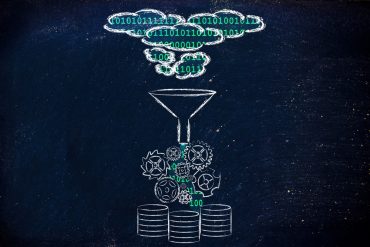
Kafka Streams is pivotal to Kafka’s evolution, enabling it to adapt to scalability and performance demands.
Apache Kafka has garnered widespread adoption. As it did, its technical architecture underwent a remarkable evolution to meet the growing demands for scalability and performance. That said, let’s delve into the key milestones of Kafka’s architectural journey.
Adapting Apache Kafka to scale for streaming tasks
Kafka Streams is pivotal to Kafka’s evolution, adapting to scalability and performance demands. It streamlines application development, leveraging Kafka’s native capabilities for data parallelism, distributed coordination, fault tolerance, and operational simplicity. This section explores the inner workings of Kafka Streams in adapting to scale.
Stream Partitions and Tasks
Kafka’s messaging layer partitions data for storage and transport, while Kafka Streams partitions data for processing. This partitioning, shared between both, enables data locality, scalability, and fault tolerance. Kafka Streams relies on partitions and tasks as core components of its parallelism model, closely tied to Kafka’s topic partitions:
- Stream partitions correspond to Kafka topic partitions, organizing data records.
- Each data record in a stream maps to a Kafka message from a topic, with keys guiding data partitioning.
- Kafka Streams breaks the processor topology into tasks, each assigned specific partitions from input streams. Tasks operate independently and process messages from record buffers, facilitating parallelism.
In simple terms, maximum parallelism is determined by the number of stream tasks linked to input topic partitions. For instance, up to 5 application instances can run concurrently with five input topic partitions. If more instances exist than partitions, the excess instances remain idle but can take over in case of failures. Kafka Streams is a library, not a resource manager, running instances alongside your application and ensuring task distribution.
Threading Model
Kafka Streams allows thread configuration for parallel processing within an application instance. Threads handle tasks and their processor topologies independently. There is no shared state among threads, simplifying parallel execution. Scaling involves adding or removing stream threads or instances, with Kafka Streams managing partition assignments.
Local State Stores
Kafka Streams introduce state stores for storing and querying data, crucial for stateful operations. The Kafka Streams DSL automatically manages these stores. Each stream task can include one or more local state stores, guaranteeing fault tolerance and automatic recovery.
Fault Tolerance
Kafka Streams builds on Kafka’s inherent fault tolerance. Kafka partitions are highly available and replicated, ensuring data persistence. In case of task failure, Kafka Streams leverages Kafka’s fault-tolerance capabilities. Task migration is seamless, with state stores also robust to failures. State updates are tracked in replicated changelog Kafka topics. Log compaction prevents topic growth, and changelog replay restores the state after task migration. Kafka Streams minimizes task (re)initialization costs through standby replicas of local states.
Kafka Streams adapts to scale effortlessly. Scaling involves adding or removing stream threads or instances automatically redistributing partitions. Fault tolerance is guaranteed through Kafka’s built-in features, with tasks and state stores resilient to failures. Kafka Streams’ simplicity and robustness make it an invaluable tool for scalable stream processing applications.
See also: Kafka Training is Essential in Today’s Real-time World
Scaling horizontally
Apache Kafka excels in a clustered setup. It thrives with multiple brokers, a design for horizontal scalability. Deploying three or more brokers ensures high availability and efficiently shares the workload.
Horizontal scaling is favored, especially when the load can be evenly spread. It’s beneficial with multiple topics or topics with many partitions. Yet, the number of partitions has limits. For instance, if a single topic grows to 9 TB, each of the nine partitions should be 1 TB on three brokers.
When data grows, horizontal scaling reaches its limit, leading to vertical scaling—adding more resources like disk space. Replication should strike a balance; excessive replication adds overhead with minimal gains in high availability.
Protocol Enhancements and Technical Compatibility
Kafka’s commitment to technical excellence extends to its strong integration with Kafka Streams, ensuring robust security and data protection. Kafka Streams natively leverages Kafka’s security features and supports client-side security measures to safeguard stream processing applications.
Integration with Kafka’s Security Features
Kafka Streams seamlessly integrates with Kafka’s security features, making it a trusted choice for secure data streaming. It aligns with Kafka’s producer and consumer libraries and extends their capabilities within stream processing. Administrators must configure security settings within the corresponding Kafka producer and consumer clients to enhance security in Kafka Streams applications.
Client-Side Security Measures
Apache Kafka offers a range of client-side security features that Kafka Streams readily embraces:
- Encrypting Data-in-Transit: Kafka Streams empowers users to enable end-to-end encryption for data exchanged between their applications and Kafka brokers. This encryption is essential when data traverses diverse security domains, including internal networks, the public internet, and partner networks. By configuring applications to use encryption consistently, data remains protected during transmission.
- Client Authentication: Kafka Streams facilitates client authentication for application connections and Kafka brokers. This means that specific applications can be authorized to access a Kafka cluster, ensuring a secure and controlled environment. Unauthorized access attempts are thwarted, enhancing the overall security posture.
- Client Authorization: Kafka Streams supports client authorization for read and write operations to further bolster security. This feature enables organizations to define access rules, specifying which applications are allowed to read from Kafka topics and which can perform write operations. It serves as a valuable defense against data pollution and fraudulent activities.
These client-side security features ensure that Kafka Streams applications can operate securely within Kafka clusters, protecting data from unauthorized access and tampering.
Required ACL Settings for Secure Apache Kafka Clusters
Access Control Lists (ACLs) are employed for Kafka clusters with stringent security requirements to control resource access, including topic creation and internal topic permissions. Kafka Streams applications must authenticate as specific users to obtain the necessary access rights. Specifically, when running Streams applications against secured Kafka clusters, the principal executing the application must be configured with ACLs that grant permissions for creating, reading, and writing to internal topics.
As Apache Kafka prefixes internal topics and embedded consumer group names with the application ID, it is advisable to use ACLs on prefixed resource patterns. This configuration approach ensures clients can manage topics and consumer groups starting with the specified prefix.
Kafka Streams’ robust integration with Kafka’s security features, support for client-side security measures, and adherence to ACL requirements make it a reliable choice for secure and protected stream processing. By configuring these security settings effectively, organizations can ensure the confidentiality and integrity of their streaming data. Monitoring application logs for security-related errors helps maintain a secure and reliable Kafka Streams environment.




























